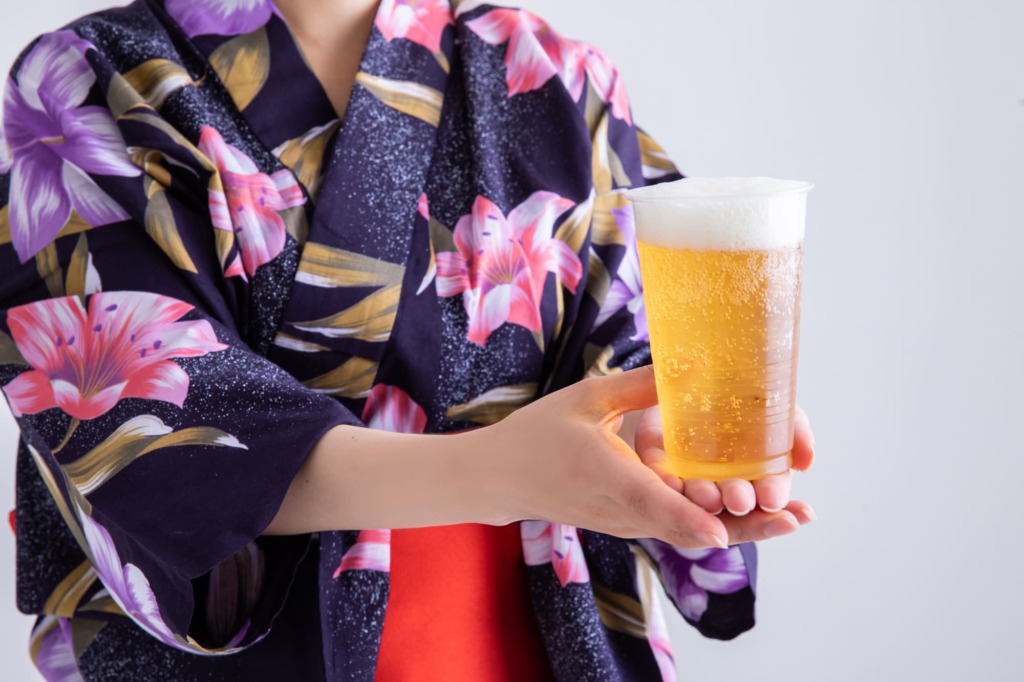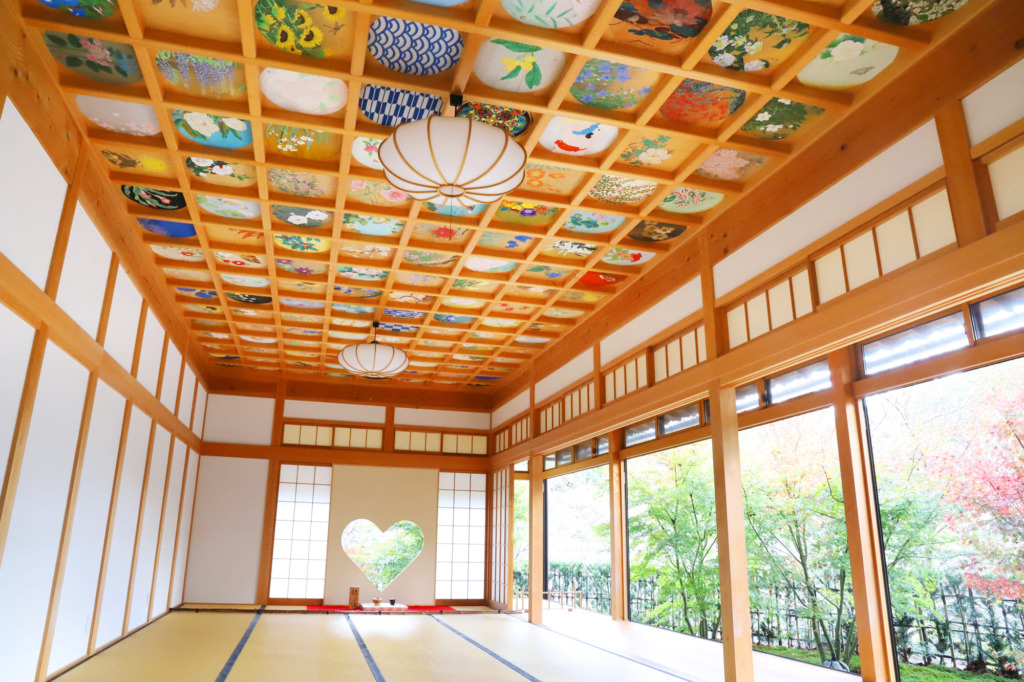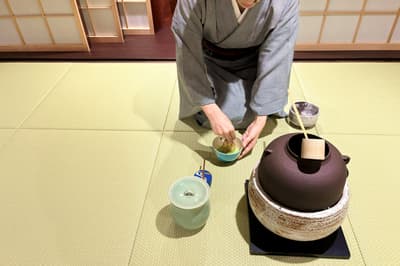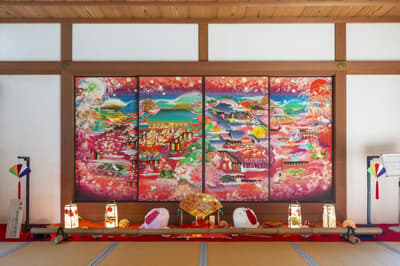In this article, we will introduce you to some unique spots in Kyoto along three different themes. Although not standard, these spots are full of exciting, little-known spots! If you are looking for a new Kyoto trip or a unique Kyoto experience, please take a look.
To learn more about Kyoto, click here.
5 places to experience Japanese culture
Ryosokuin temple(両足院)

Ryosokuin, a 7-minute walk from Gion-Shijo Station, is a temple where you can experience zazen. Zazen is a Buddhist training method to unify the mind and face oneself while sitting with correct posture. It requires correct posture, breathing, and concentration on one’s own mind.

There are various courses for zazen experience at Ryosokuin temple, and there is also a course for beginners that will teach you how to do it in detail (basically, the explanation is given in Japanese).
Zazen experiences are held almost every day, but some days are closed, so please check the calendar on the official website in advance. Reservations can also be made online.

Seasonal garden special viewings held for a limited time are also popular at Ryosokuin temple. These are held from June to July in early summer to coincide with the blooming of the Saururus chinensis Baill.
Official website: https://ryosokuin.com/zazen/
Kanshundo East Store (甘春堂 東店)

Kanshundo is a long-established Japanese confectionery in Kyoto. Vivid and lovely looking Jo-namagashi (traditional Japanese sweets) and famous confections with various stories behind them are available for sale.


There are several stores in Kyoto, and at the Higashi and Sagano stores, you can try your hand at making Japanese sweets. The motifs of the light-colored Jo-namagashi they make change with the seasons. Reservations are basically required, so please check the official website along with the schedule.
Official website: https://www.kanshundo.co.jp/class/
Kimono Tea Ceremony Kyoto MAIKOYA(着物茶道体験 KYOTO MAIKOYA 錦店)

Located a 7-minute walk from Kawaramachi Station, this store offers an authentic tea ceremony experience. There are Nishiki and Gion Kiyomizu branches, both of which are located near major sightseeing spots, so it is recommended to visit them while sightseeing.
The tea ceremony experience takes place in an authentic tea room with a view of a Japanese garden. After an explanation of tea ceremony etiquette and utensils, tea and Japanese sweets will be served according to the actual etiquette. Explanations are also available in English.

You can participate in the tea ceremony experience in plain clothes, but for those who want to enjoy the atmosphere more, a set with kimono dressing is recommended. You can also take photos in the garden, so you can take a picture that gives you a sense of Japanese harmony.
Official website: https://mai-ko.com/culture/tea-ceremony/
Kyo-Yuzen Workshop Studio Marumasu Nishimuraya

A studio where visitors can experience various aspects of Kyoto’s traditional craft, Kyo-Yuzen. Among kimonos using the dyeing technique of yuzen dyeing, those produced in Kyoto are called “Kyo-yuzen”.
At the workshop, you can experience Kyo Yuzen, where you can use stencils to create your favorite design. There are more than 3,000 different paper patterns to choose from. You can take home the design you have made on the same day.
The workshop, a renovated Kyomachiya, can accommodate up to 250 people and is a popular spot for groups such as students on school excursions. Early reservations are recommended.
Official website: https://www.marumasu-nishimuraya.co.jp/en/private
SAMURAI and NINJA MUSEUM with EXPERIENCE (サムライ忍者体験ミュージアム)

The SAMURAI NINJA MUSEUM TOKYO With Experience is an activity museum that not only exhibits antiques, but also allows visitors to actually wear armor, the costume of the samurai, and experience shuriken throwing as a ninja.
The basic plan includes a guide who explains the history of samurai and ninja, and a samurai and ninja experience. For those seeking a more authentic experience, there is also a special plan that includes ninja training in ninja costumes and specialized techniques, as well as basic swordsmanship for groups to learn.
It is also only a 3-minute walk from Kyoto Kawaramachi Station. Nearby is Nishiki Market, a popular eating place, so please stop by together.
5 Unique Sightseeing Spots
Recommended for those who have already visited the standard tourist spots such as Kiyomizu-dera temple and Kinkaku-ji temple! Here are some unique sightseeing spots that are also very Kyoto-like.
Gekkeikan Okura Sake Museum (月桂冠大倉記念館)

The museum is located in Fushimi, one of the most famous sake-producing areas in Japan. Visitors can learn about the history of sake brewing in Fushimi and Gekkeikan. Gekkeikan is a sake manufacturer founded in Fushimi in 1637. Many supermarkets and liquor stores in Japan carry Gekkeikan sake, which is familiar to the Japanese.

During the 60-minute tour, visitors can compare various types of sake after being introduced to exhibits related to Gekkeikan and Fushimi sake brewing. Advance reservations are recommended for tours, but tours can be taken on the day of the tour if space is available. The store selling Gekkeikan products is open to visitors not taking the tour, so please stop by to look for souvenirs.
Official website: https://www.gekkeikan.com/museum/
Fushimi Sake Village(伏水酒蔵小路)

Fushimi Sake Village is recommended for sake lovers. Lined with nine restaurants in a small alley-like atmosphere, this is a spot unique to Fushimi, a sake-producing area. Each restaurant offers dishes that match with sake, such as oden and sushi.

One of the stores on Fushimi Sake Village, “Sakagura” offers over 120 brands of sake. Among them, we recommend the “Kizukizake Set of 18 Sake Breweries”. Sake lovers will love this set, which allows you to compare 18 different types of sake from Fushimi’s breweries.
Official website: http://www.fushimi-sake-village.com/english.html
Sagano- Yu(嵯峨野湯)

Sagano-Yu is a café renovated from a public bathhouse. The tiles on the walls as well as the faucets are still there, but the interesting point is that they are balanced as an interior design. Fluffy pancakes and tofu pasta mixed with tofu on a wooden board are the standard menu items, and they are delicious. This café satisfies both the eye and the palate.
Arashiyama Monkey Park Iwatayama(嵐山モンキーパーク いわたやま)

Arashiyama Monkey Park is home to about 120 Japanese monkeys living in the wild. Here you can walk along the mountain paths and see the monkeys living freely. You can also feed the monkeys at the rest area at the top of the mountain. You can experience monkeys to your heart’s content.
The summit of the mountain also offers a spectacular view of the city of Kyoto. On a clear day, you can even see Kyoto Tower. The long slide and other playground equipment are also available for both children and adults to play on.

From the entrance to the monkey area, there is a 20-minute mountain climbing course that provides a bit of a mountain-climbing experience. The path is well-maintained, so even small children can climb, but sneakers or other comfortable walking shoes are recommended.
It is conveniently located a 7-minute walk from Arashiyama Station on the Hankyu Railway. Admission is reasonable at 600 yen for adults and 300 yen for children, but please note that cash only is accepted.
Kamishichiken Beer Garden(上七軒ビアガーデン)


A limited time beer garden held at Kamishichiken Kabukai. It is usually held from July to September. Geiko and maiko dressed in yukata welcome you to this special beer garden, which is very Kyoto-like.

Kamishichiken Kabukai is a theater facility where maiko perform the achievement of their training. It is famous for the “Kita-no-dori” dance performance in spring.
4 photo-worthy shrines and temples
The classic sightseeing spots in Kyoto are shrines and temples with a sense of Japanese history. Some of them have become popular through SNS, and there are many gorgeous and colorful shrines and temples that you won’t find anywhere else. Please visit them to take a commemorative photo.
Shoujuin Temple(正寿院)

Shojuin Temple in Ujitawara-cho is located in a peaceful natural setting. It is famous for the lovely heart-shaped window in the guest hall, a photo spot where the view through the window changes with the changing of the seasons.

In fact, this heart-shaped window is one of the traditional Japanese patterns called Inome. This pattern has been used to decorate temples and shrines for about 1,400 years.

The “wind chime festival” held from June to September produces cool sounds, and some of the more than 2,000 wind chimes are decorated with unusual flowers such as hydrangeas and sunflowers, making it a perfect spot for taking pictures in yukata. It is a perfect spot for taking pictures in yukata.
Kawai Shrine(河合神社)

Kawai Shrine is located in the Tadasunomori forest of Shimogamo Shrine, one of Kyoto’s representative shrines. Ema is a type of votive tablet used at shrines and temples, but the “Kagami-Ema” at Kawai Shrine is very unique.
This unusual Ema is a hand-mirror-shaped votive tablet with a picture of a face on it, on which visitors apply their own makeup using their own cosmetics. It is said to bring blessings to make one beautiful not only on the outside but also on the inside.
Okazaki Shrine (岡崎神社)

Located near Heian-jingu Shrine, Okazaki Shrine is one of the shrines built to protect Heian-kyo. In recent years, the shrine has become the talk of the town as a rabbit-filled shrine. The shrine grounds are filled with rabbits anyway! The lanterns in the shrine are painted with rabbits, the stone statues in the shrine are also rabbits…you will encounter a lot of rabbits anyway.

The “Usagi-mikuji” (rabbit omikuji) is a representative of the cute rabbits of Okazaki Shrine. The ceramic rabbit contains a omikuji, and you can take the rabbit home along with the omikuji. The round shape of the rabbit is very cute and makes a perfect memento of your trip!
Incidentally, Okazaki Shrine is named after a rabbit known for its fertility, and is believed to bring blessings for child bearing, safe childbirth, matchmaking, and warding off bad luck.
Zuishin-i Temple(随心院)

This temple is associated with Ono no Komachi, one of the three most beautiful women in the world. It is also known for its plum blossoms, and in late March, a traditional dance called “Hanezu Odori” is performed.

The highlight is the “Gokusaishiki-umeiro-komachi-ezu,” a sliding door (Fusuma) painting that looks like a work of art displayed in the hall’s “No-no-ma”. The life of Ono no Komachi is depicted on four sides, together with scenes of the Hanezu dance. Every March, the No-no-ma room is decorated with colorful fresh flowers in the “Hana-no-ma”, which allows visitors to enjoy a more luxurious space.
Official website: https://www.zuishinin.or.jp/


